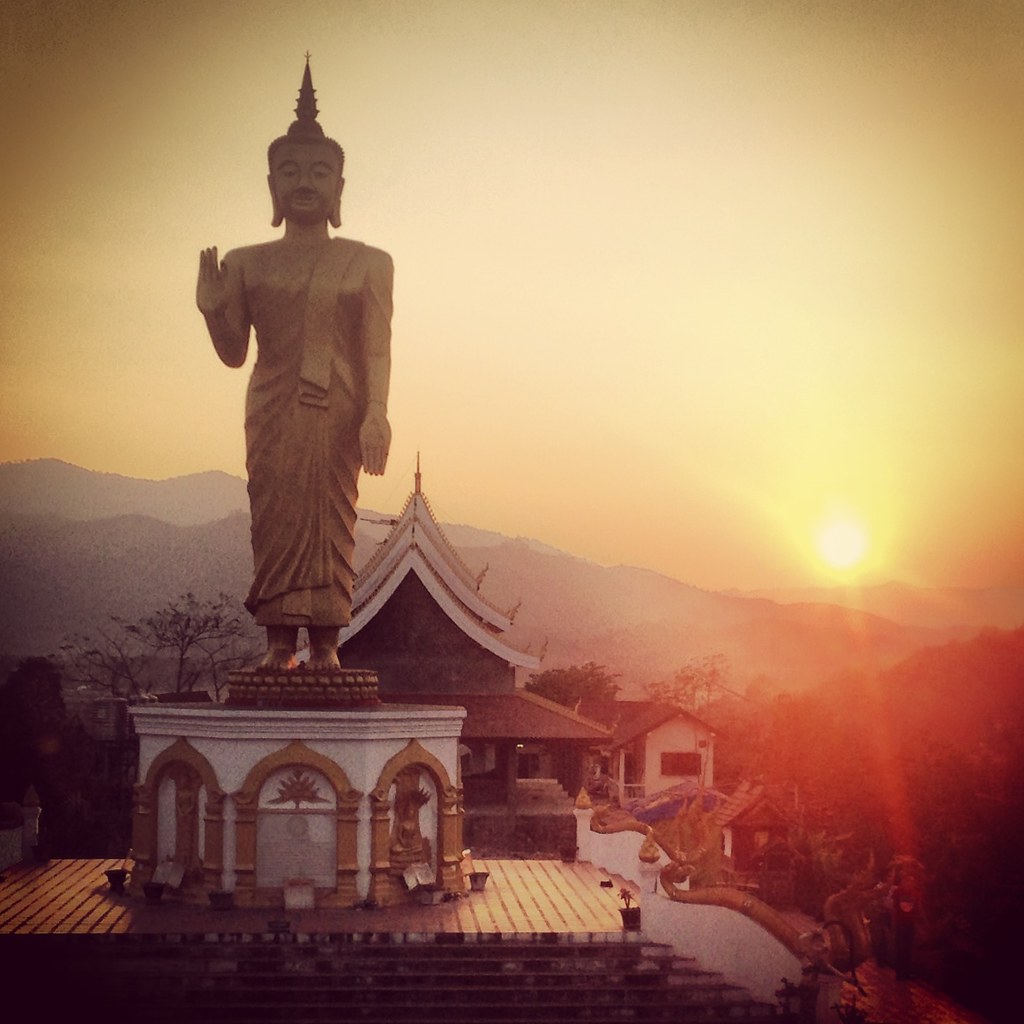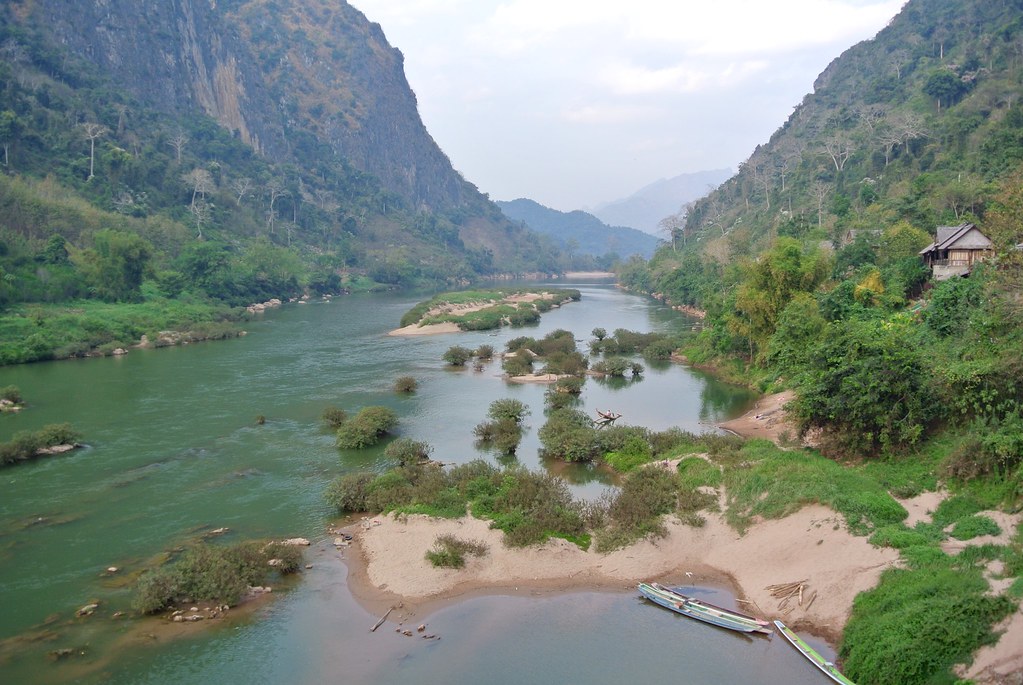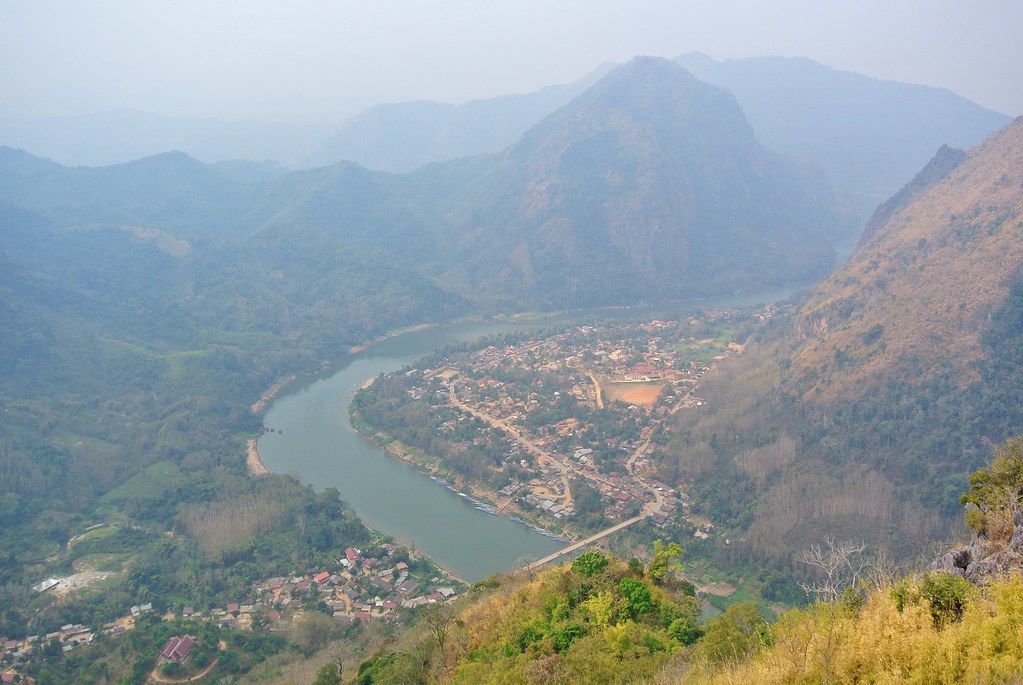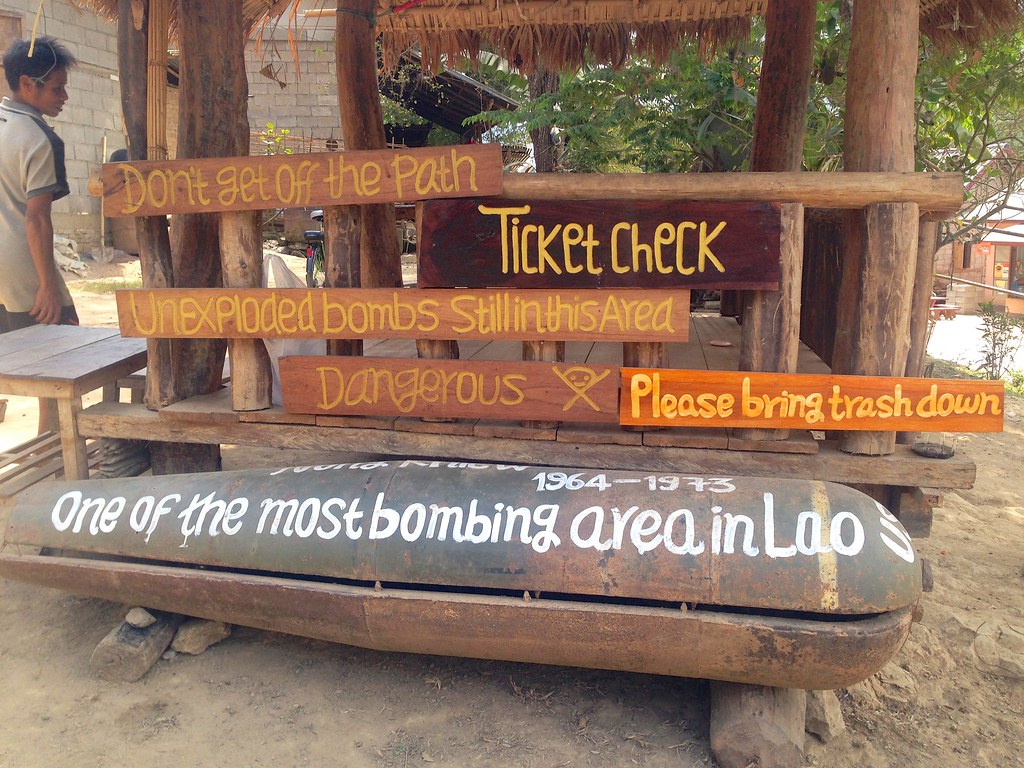After leaving Luang Namtha I made my way south to Nong Khiaw, a small town by the Nam Ou river. There aren’t any busses directly between the two towns so I stopped overnight in Udomxai on the way.
There isn’t a whole lot to do in Udomxai but it’s a reasonable place to stop. The highlight for me was Phu That Pagoda which overlooks the town and is a good place to watch the sunset. I spoke to some local students while I was there, keen to practice their English with foreigners (also called falang). One student, Tomo, told me about the Hmong village that he’s from and living away from home to study English in the hope of becoming a tour guide.

The minibus to Nong Khiaw took about five hours - about an hour longer than scheduled. Like with other journeys in Laos it was bumpy and 19 of us were packed into a 13-seat minibus. There was another falang on-board, Ian, an Australian volunteering for the charity Adopt a Village in Laos. He’d just spent a few weeks working and living in different villages so it was good to hear about some of those and the work the charity is doing, especially installing filters for clean drinking water.
Set between limestone mountains, Nong Khiaw is really beautiful. There are always a couple of locals stopped on the bridge over the Nam Ou and the view just doesn’t get old - especially on a cloudy morning.


The best thing to do in Nong Khiaw is nothing and just enjoy the slow pace of life. That said there are a couple of things to do.
The viewpoint is a community-built project and affords a great view of the town and valley it sits in. The walk up took about an hour and another 40 minutes to get back down. By the end of it I was completely covered in the red dust that made up a lot of the path. As with everywhere in Laos it’s extremely important to stick to the path as there is a real threat of UXO (unexploded ordinance) after America’s bombing of Laos during the Vietnam war (more on this in a later post).



A little further out of town, though only about 3km, is Pathok cave. The two parts that are easily accessible are only small and not that impressive looking but the story is more interesting. The villagers of Nong Khiaw lived in the caves for seven years during the Vietnam war and some parts were designated for official duties such as Meeting hall of the provincial governor and a finance office. I later found out in Phonsovan that the villagers would only work the fields at night when they couldn’t be spotted by American planes and only dark-coloured animals were used!

Nong Khiaw is one of my favourite places in Laos and thanks to the more lively Muang Ngoi Neua an hour up the Nam Ou, it appears to stay relatively quiet even in high season.
More photos of Udomxai and Nong Khiaw on Flickr.